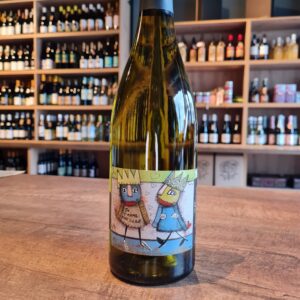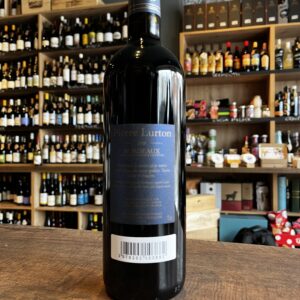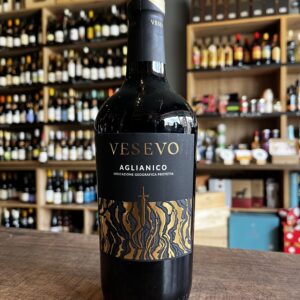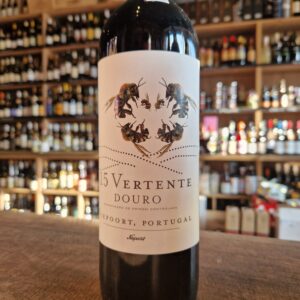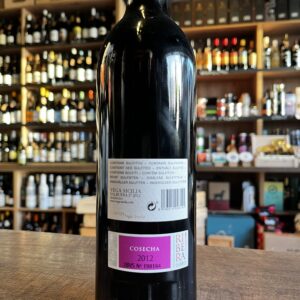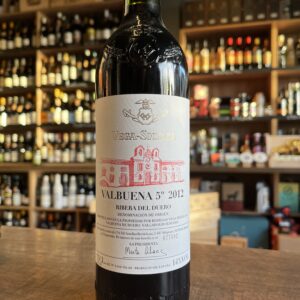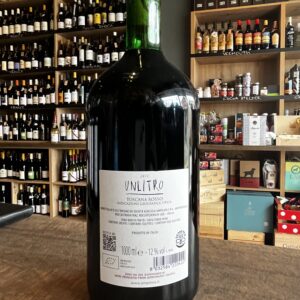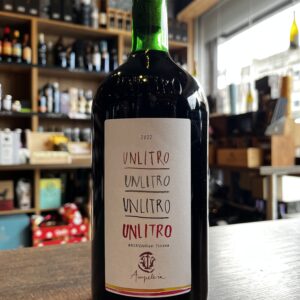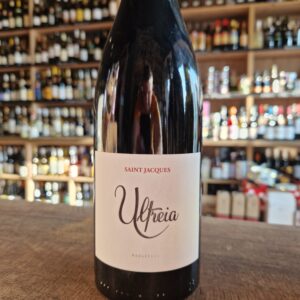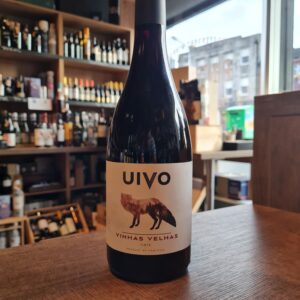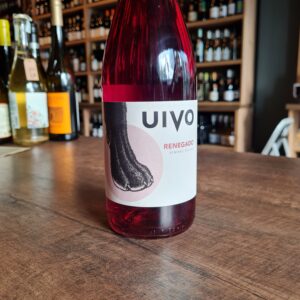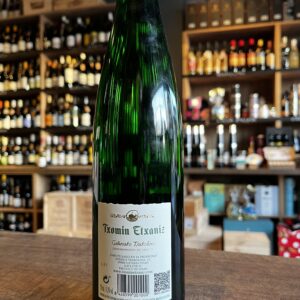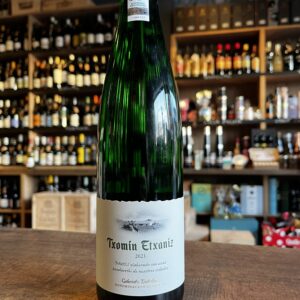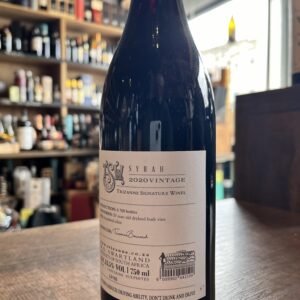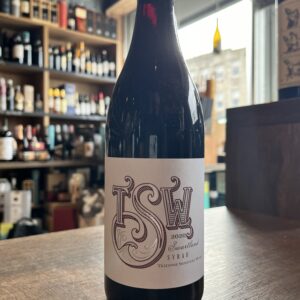-
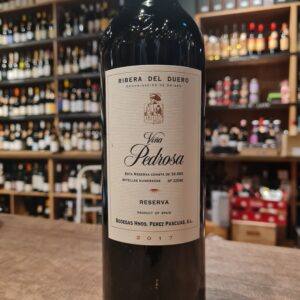 Bodegas Hnos. Perez Pascuas is a winery founded in 1980 and located in Pedrosa de Duero. In its vineyards, Tinta del País or Tempranillo predominate, and they also have a little Cabernet Sauvignon. They produce around 500,000 bottles. They also have a large collection of 3,000 barrels. The barrels are renewed every 3 years to maintain the contribution of compounds from the wood, and the toasted elements that characterise the style of the winery. Viña Pedrosa Reserva is an iconic wine from Pedrosa de Duero. A complex, powerful and highly expressive wine
Bodegas Hnos. Perez Pascuas is a winery founded in 1980 and located in Pedrosa de Duero. In its vineyards, Tinta del País or Tempranillo predominate, and they also have a little Cabernet Sauvignon. They produce around 500,000 bottles. They also have a large collection of 3,000 barrels. The barrels are renewed every 3 years to maintain the contribution of compounds from the wood, and the toasted elements that characterise the style of the winery. Viña Pedrosa Reserva is an iconic wine from Pedrosa de Duero. A complex, powerful and highly expressive wine -
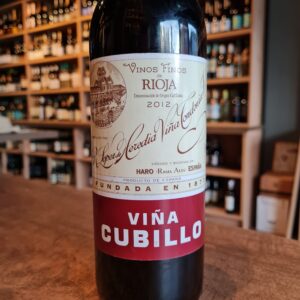 Viña Cubillo wines come from the vineyard called Viña Cubillas, some 4 km away from the bodega, which as with all of the other vineyards, was bought by our founder. Historically these wines were called "Special Harvest". For 143 years, four generations of the López de Heredia family have devoted themselves to producing exceptional and unique wines. Masterpieces which have achieved that which the founder of the company, Rafael López de Heredia y Landeta, defined in the late nineteenth century as the "Supreme Rioja". Vineyard care, a scrupulous selection of grapes, ageing in oak barrels in the heart of deep underground galleries, and the later ageing in bottles, all contribute to making these illustrious wines with their exceptional bouquet. Decant it for an hour if possible, It goes perfectly with all meat dishes, tapas and assorted antipasti, sausages, small game and wild mushrooms.
Viña Cubillo wines come from the vineyard called Viña Cubillas, some 4 km away from the bodega, which as with all of the other vineyards, was bought by our founder. Historically these wines were called "Special Harvest". For 143 years, four generations of the López de Heredia family have devoted themselves to producing exceptional and unique wines. Masterpieces which have achieved that which the founder of the company, Rafael López de Heredia y Landeta, defined in the late nineteenth century as the "Supreme Rioja". Vineyard care, a scrupulous selection of grapes, ageing in oak barrels in the heart of deep underground galleries, and the later ageing in bottles, all contribute to making these illustrious wines with their exceptional bouquet. Decant it for an hour if possible, It goes perfectly with all meat dishes, tapas and assorted antipasti, sausages, small game and wild mushrooms. -
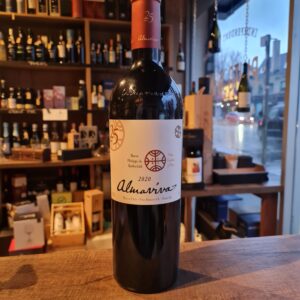 To celebrate the estate's 25th anniversary, the 2020 vintage by Almaviva is adorned with a special "25 años" label. Viña Almaviva was founded in 1997 following the collaboration between Baroness Philippine de Rothschild and Don Alfonso Larrain, President of Viña Concha y Toro. The Viña Almaviva project gives rise to fine Chilean wines that benefit from a rich French winemaking know-how and the unique expression of this Central Valley terroir. The name Almaviva, though it has an Hispanic sonority, belongs to classical French literature: Count Almaviva is the hero of The Marriage of Figaro, the famous play by Beaumarchais (1732-1799), later turned into an opera by the genius of Mozart. The label, meanwhile, pays homage to Chile’s ancestral history, with three reproductions of a stylized design, which symbolizes the vision of the earth and the cosmos in the Mapuche civilization. The design appears on the kultrun, a ritual drum used by the Mapuche. The label bears the name Almaviva in Beaumarchais’ own handwriting. Two great traditions thus join hands to offer the whole world a promise of pleasure and excellence. Located in the heart of the beautiful Maipo Valley, the Almaviva vineyard covers 50 hectares. The emblematic Bordeaux grape varieties thrive in this exceptional terroir. Almaviva has now become an essential reference for fine Chilean wines throughout the world. A particularly dry year, 2020 began with a cool, dry winter, resulting in a late budburst, particularly during the first two weeks of October. The spring and summer were marked by high temperatures but also by drought. These conditions favoured a rapid maturation of the vineyard and an early harvest, which ended three to four weeks earlier than in recent years. Despite this extreme climate and thanks to the rigour of the teams, the 2020 vintage reveals a fruity structure, a fresh expression and a rare tension.
To celebrate the estate's 25th anniversary, the 2020 vintage by Almaviva is adorned with a special "25 años" label. Viña Almaviva was founded in 1997 following the collaboration between Baroness Philippine de Rothschild and Don Alfonso Larrain, President of Viña Concha y Toro. The Viña Almaviva project gives rise to fine Chilean wines that benefit from a rich French winemaking know-how and the unique expression of this Central Valley terroir. The name Almaviva, though it has an Hispanic sonority, belongs to classical French literature: Count Almaviva is the hero of The Marriage of Figaro, the famous play by Beaumarchais (1732-1799), later turned into an opera by the genius of Mozart. The label, meanwhile, pays homage to Chile’s ancestral history, with three reproductions of a stylized design, which symbolizes the vision of the earth and the cosmos in the Mapuche civilization. The design appears on the kultrun, a ritual drum used by the Mapuche. The label bears the name Almaviva in Beaumarchais’ own handwriting. Two great traditions thus join hands to offer the whole world a promise of pleasure and excellence. Located in the heart of the beautiful Maipo Valley, the Almaviva vineyard covers 50 hectares. The emblematic Bordeaux grape varieties thrive in this exceptional terroir. Almaviva has now become an essential reference for fine Chilean wines throughout the world. A particularly dry year, 2020 began with a cool, dry winter, resulting in a late budburst, particularly during the first two weeks of October. The spring and summer were marked by high temperatures but also by drought. These conditions favoured a rapid maturation of the vineyard and an early harvest, which ended three to four weeks earlier than in recent years. Despite this extreme climate and thanks to the rigour of the teams, the 2020 vintage reveals a fruity structure, a fresh expression and a rare tension. -
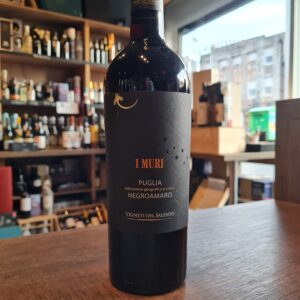 Great value wine from Puglia. This is Farnese’s venture in Puglia. The wines are made at two wineries in the province of Taranto on the western flank of Salento. The style of the wines - fresh whites, soft and generous reds - will be familiar to those who buy their other wines, as winemaker Filippo Baccalaro is the driving force behind this label. Filippo, a native of Piemonte, has been working in Puglia for almost two decades. He was attracted by the rich, ripe flavours of the fruit, and has the potential to capture these flavours with minimal use of technology and a lot of know-how. The vineyards are mostly situated in the communes of Manduria and Sava and are owned by growers with whom Filippo has been working for many years. Production is lower than its potential, which ensures the best quality grapes are selected. The red soils are calcerous clay and rich in iron, minerals and nutrients. 80% of the grapes come from old bush vines and the rest from trained vines that are at least 20 years old. Spring was colder than usual, and this slowed down budbreak and flowering. May and June followed with above average rainfall. Despite this, the Mistral and the north wind persisted for more than 30 days and this allowed vines to keep healthy during the ripening phase delivering extraordinary quality but with 20% lower yields. Enjoy with Pastas, cheeses, Chicken dishes and some not too rich red meats
Great value wine from Puglia. This is Farnese’s venture in Puglia. The wines are made at two wineries in the province of Taranto on the western flank of Salento. The style of the wines - fresh whites, soft and generous reds - will be familiar to those who buy their other wines, as winemaker Filippo Baccalaro is the driving force behind this label. Filippo, a native of Piemonte, has been working in Puglia for almost two decades. He was attracted by the rich, ripe flavours of the fruit, and has the potential to capture these flavours with minimal use of technology and a lot of know-how. The vineyards are mostly situated in the communes of Manduria and Sava and are owned by growers with whom Filippo has been working for many years. Production is lower than its potential, which ensures the best quality grapes are selected. The red soils are calcerous clay and rich in iron, minerals and nutrients. 80% of the grapes come from old bush vines and the rest from trained vines that are at least 20 years old. Spring was colder than usual, and this slowed down budbreak and flowering. May and June followed with above average rainfall. Despite this, the Mistral and the north wind persisted for more than 30 days and this allowed vines to keep healthy during the ripening phase delivering extraordinary quality but with 20% lower yields. Enjoy with Pastas, cheeses, Chicken dishes and some not too rich red meats -
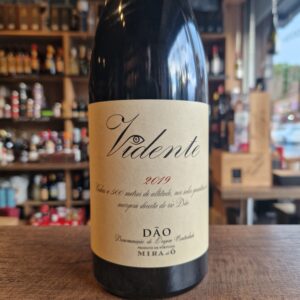 This wine rises from 500 meters above sea level in the granite soils of the right bank of the Dão. These low yield vines are about 30 years old and produce high quality grapes of the varieties Jaen, Alfrocheiro, Tinta Pinheira, Tinta Roriz and Touriga Nacional. This wine is a very personal vision over the Dão and its wines, enhancing the elegance and freshness that are natural to this region. True value in wine. Food orientated but aren't all the wines?
This wine rises from 500 meters above sea level in the granite soils of the right bank of the Dão. These low yield vines are about 30 years old and produce high quality grapes of the varieties Jaen, Alfrocheiro, Tinta Pinheira, Tinta Roriz and Touriga Nacional. This wine is a very personal vision over the Dão and its wines, enhancing the elegance and freshness that are natural to this region. True value in wine. Food orientated but aren't all the wines? -
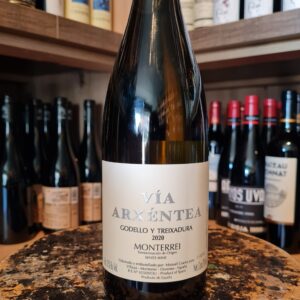 DO Monterrei is the smallest of the Galician DOs and the most recent, having been created in 1996. It is an emerging region located in the province of Ourense in the south-east of Galicia, on the border with Portugal. The Atlantic influence here is not as strong and the climate is hotter and more continental than the rest of Galicia, making it possible to produce impressive whites from Treixadura and Godello as well as reds from autochtonous Mencia. Most of the vineyards are located on the slopes lining the River Támega where the soil has a deep red colour with a high clay content. After spending many years working for other wineries in the area around Galicia, Manuel Guerra Justo decided to break away and set up his own adega, “Via Arxentea”, literally translated as “ The Silver Route”, the local name for the important pilgrimage route of El Camino de Santiago to Santiago de Compostela. Manuel Guerra is a “Colleitero” and therefore responsible for the entire production cycle, from the care in the vineyard to the winemaking. He is the first to acknowledge that the secret to achieving purity and varietal expression in his wines is in his vineyard management which he attends to personally and pampers vine by vine as if they were his own children, with the sole objective of achieving maximum quality. Under the consultancy of well known winemaker, Alvaro Bueno, Manuel Guerra Justo owns four hectares around Verin, planted almost equally between Godello and Treixadura and a small batch of Mencia. Vía Arxentea wine are made from estate bottled fruit, harvested by hand and fermented using indigenous yeasts.
DO Monterrei is the smallest of the Galician DOs and the most recent, having been created in 1996. It is an emerging region located in the province of Ourense in the south-east of Galicia, on the border with Portugal. The Atlantic influence here is not as strong and the climate is hotter and more continental than the rest of Galicia, making it possible to produce impressive whites from Treixadura and Godello as well as reds from autochtonous Mencia. Most of the vineyards are located on the slopes lining the River Támega where the soil has a deep red colour with a high clay content. After spending many years working for other wineries in the area around Galicia, Manuel Guerra Justo decided to break away and set up his own adega, “Via Arxentea”, literally translated as “ The Silver Route”, the local name for the important pilgrimage route of El Camino de Santiago to Santiago de Compostela. Manuel Guerra is a “Colleitero” and therefore responsible for the entire production cycle, from the care in the vineyard to the winemaking. He is the first to acknowledge that the secret to achieving purity and varietal expression in his wines is in his vineyard management which he attends to personally and pampers vine by vine as if they were his own children, with the sole objective of achieving maximum quality. Under the consultancy of well known winemaker, Alvaro Bueno, Manuel Guerra Justo owns four hectares around Verin, planted almost equally between Godello and Treixadura and a small batch of Mencia. Vía Arxentea wine are made from estate bottled fruit, harvested by hand and fermented using indigenous yeasts. -
Out of stock
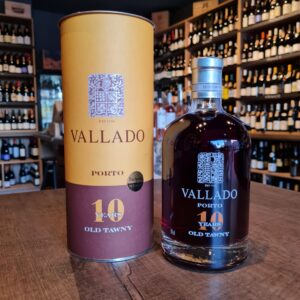 Quinta do Vallado, established in 1716, is one of the oldest and most famous Quintas in the Douro Valley. It once belonged to the legendary Dona Antonia Adelaide Ferreira, and still belongs to her descendents. Produces both still and port wines. This eighteenth-century Douro wine estate is actually one of the most modern-looking in Portugal. Although the team uses the traditional panoply of indigenous grapes, its methods are bang up to date and the results are nothing short of sensational. Tawny ports are wines usually made from red grapes that are aged in wooden barrels exposing them to gradual oxidation and evaporation. As a result of this oxidation, they mellow to a golden-brown color. The exposure to oxygen imparts "nutty" flavours to the wine, which is blended to match the house style. This port is really best enjoyed with a good strong cheese board. Think mature hard cheeses and salty blues. Rich and flavoursome to match with the intense flavours of the port.
Quinta do Vallado, established in 1716, is one of the oldest and most famous Quintas in the Douro Valley. It once belonged to the legendary Dona Antonia Adelaide Ferreira, and still belongs to her descendents. Produces both still and port wines. This eighteenth-century Douro wine estate is actually one of the most modern-looking in Portugal. Although the team uses the traditional panoply of indigenous grapes, its methods are bang up to date and the results are nothing short of sensational. Tawny ports are wines usually made from red grapes that are aged in wooden barrels exposing them to gradual oxidation and evaporation. As a result of this oxidation, they mellow to a golden-brown color. The exposure to oxygen imparts "nutty" flavours to the wine, which is blended to match the house style. This port is really best enjoyed with a good strong cheese board. Think mature hard cheeses and salty blues. Rich and flavoursome to match with the intense flavours of the port. -
 In 2003, José Ribeiro Vieira purchased a four hectare vineyard in the foothills of Serra de Aire of Cortes, in the Alta Estremadura, near Lisbon. Vale da Mata pays tribute to Vieira’s winemaker father, Manuel, who claimed that Vale de Mata was the site where he succeeded in producing his best wines. The Vale de Mata project respects the expression of its terroir, cultivating the vines sustainably and using minimal intervention in the winery. Manuel gave this wine its name and his granddaughter Catarina Viera has followed in his footsteps, continuing his winemaking legacy. In 2018. Vale da Mata is the name of a small, old vineyard located in the foothills of Serra de Aire, in Cortes. The vineyard has a maritime climate and is influenced by the Atlantic Ocean. The parcel is just a few hectares and is situated on a steep terrain with rocky soil. The land is extremely hard to work and is cultivated manually, with winter pruning and green harvesting taking place by hand. Protected to the north, it has good sunlight exposure throughout the day and is surrounded by olive trees, fig trees, walnuts and shrubs. Vale de Mata is associated with several sustainable programmes; they are a member of the FSC and grow all their grapes according to organic philosophies. The vines are trained according to the Cordon Royat method and the grapes are manually harvested at optimum maturity.
In 2003, José Ribeiro Vieira purchased a four hectare vineyard in the foothills of Serra de Aire of Cortes, in the Alta Estremadura, near Lisbon. Vale da Mata pays tribute to Vieira’s winemaker father, Manuel, who claimed that Vale de Mata was the site where he succeeded in producing his best wines. The Vale de Mata project respects the expression of its terroir, cultivating the vines sustainably and using minimal intervention in the winery. Manuel gave this wine its name and his granddaughter Catarina Viera has followed in his footsteps, continuing his winemaking legacy. In 2018. Vale da Mata is the name of a small, old vineyard located in the foothills of Serra de Aire, in Cortes. The vineyard has a maritime climate and is influenced by the Atlantic Ocean. The parcel is just a few hectares and is situated on a steep terrain with rocky soil. The land is extremely hard to work and is cultivated manually, with winter pruning and green harvesting taking place by hand. Protected to the north, it has good sunlight exposure throughout the day and is surrounded by olive trees, fig trees, walnuts and shrubs. Vale de Mata is associated with several sustainable programmes; they are a member of the FSC and grow all their grapes according to organic philosophies. The vines are trained according to the Cordon Royat method and the grapes are manually harvested at optimum maturity. -
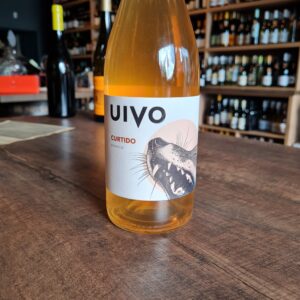 Uivo, a howl back to Nature! Naturally farmed Moscatel Galego, Branco Wine grapes with minimal intervention in the cellar, 4 months of skin contact in cement tanks. Folias de Baco was started in 2007 by young, innovative winemaker, Tiago Sampaio, who was inspired by his grandfather’s vineyard work. He has a vivacious curiosity and loves to experiment at every step of the winemaking/growing processes. He has studied agricultural engineering and has a PhD in Viticulture and Enology from Oregon State University, where he picked up on modern philosophies and aesthetics of winemaking, never forgetting his Douro roots. Folias de Baco is in the Alto Douro, in the sub-region of Cima-Corgo where the land is very tough and challenging at a higher altitude, but it is an expression of traditional melding with modern techniques. The ‘Uivo Curtido’ is comprised of 100% moscatel galego from 35+ year old vines in soils spattered with schist and granite. It is unfined and unfiltered. As tasty as it looks. Organically grown, low-intervention/natural wine, vegan. Have fun with it
Uivo, a howl back to Nature! Naturally farmed Moscatel Galego, Branco Wine grapes with minimal intervention in the cellar, 4 months of skin contact in cement tanks. Folias de Baco was started in 2007 by young, innovative winemaker, Tiago Sampaio, who was inspired by his grandfather’s vineyard work. He has a vivacious curiosity and loves to experiment at every step of the winemaking/growing processes. He has studied agricultural engineering and has a PhD in Viticulture and Enology from Oregon State University, where he picked up on modern philosophies and aesthetics of winemaking, never forgetting his Douro roots. Folias de Baco is in the Alto Douro, in the sub-region of Cima-Corgo where the land is very tough and challenging at a higher altitude, but it is an expression of traditional melding with modern techniques. The ‘Uivo Curtido’ is comprised of 100% moscatel galego from 35+ year old vines in soils spattered with schist and granite. It is unfined and unfiltered. As tasty as it looks. Organically grown, low-intervention/natural wine, vegan. Have fun with it -
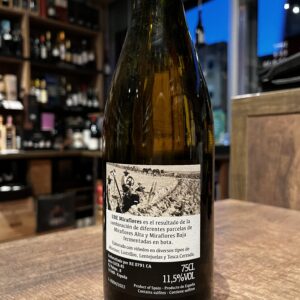
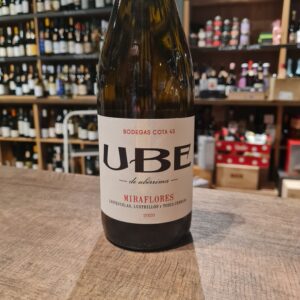 UBE Miraflores is a beautiful introduction to the terroirs of Sanlúcar de Barrameda. This winegrowing region is renowned for its chalky albariza soils and coastal setting, which impart brightness and salinity onto wines produced here. Made in a ‘sherry-like’ style, this wine ages under flor but is not fortified, with a focus on fruit character. The resulting wine is fresh and easy to drink.
UBE Miraflores is a beautiful introduction to the terroirs of Sanlúcar de Barrameda. This winegrowing region is renowned for its chalky albariza soils and coastal setting, which impart brightness and salinity onto wines produced here. Made in a ‘sherry-like’ style, this wine ages under flor but is not fortified, with a focus on fruit character. The resulting wine is fresh and easy to drink. -
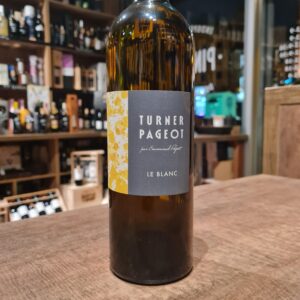 Australian scientist Karen Turner and her husband Emmanuel farm 10 hectares in the Languedoc bring you this incredible intro to orange wine! The 3 grapes here are fermented like a red wine, skins, stalks, and all-- making for white with the tannins and structure of a red. Karen’s says her goal with ‘Le Blanc’ is to bring body and freshness to the wine. The north-facing slopes where their vineyards grow on help to ensure a long and even maturation for the grapes. While Marsanne is not usually an aromatic varietal, Karen’s use of open vats brings out the heady aromas of tangerine and mango. Full-bodied and approachable, it smells like orange rinds and white flowers wilting in the sun, and tastes like yellow peaches, those tangerines and dry, dusty earth, but never loses its identity as a white wine. LADY IN CHARGE: While husband Emmanuel manages the vineyards, the real star is his wife Karen, who makes the wine and also works as the head winemaker and manager of another (very famous) Languedoc winery, Prieuré de Saint Jean de Bébian. Serious girl boss! Decant for 20 minutes before enjoying. It’ll open up and reveal its prettiness with air. Perfect for poultry, fish, cheese and early dishes. Also wonderful in itself.
Australian scientist Karen Turner and her husband Emmanuel farm 10 hectares in the Languedoc bring you this incredible intro to orange wine! The 3 grapes here are fermented like a red wine, skins, stalks, and all-- making for white with the tannins and structure of a red. Karen’s says her goal with ‘Le Blanc’ is to bring body and freshness to the wine. The north-facing slopes where their vineyards grow on help to ensure a long and even maturation for the grapes. While Marsanne is not usually an aromatic varietal, Karen’s use of open vats brings out the heady aromas of tangerine and mango. Full-bodied and approachable, it smells like orange rinds and white flowers wilting in the sun, and tastes like yellow peaches, those tangerines and dry, dusty earth, but never loses its identity as a white wine. LADY IN CHARGE: While husband Emmanuel manages the vineyards, the real star is his wife Karen, who makes the wine and also works as the head winemaker and manager of another (very famous) Languedoc winery, Prieuré de Saint Jean de Bébian. Serious girl boss! Decant for 20 minutes before enjoying. It’ll open up and reveal its prettiness with air. Perfect for poultry, fish, cheese and early dishes. Also wonderful in itself. -
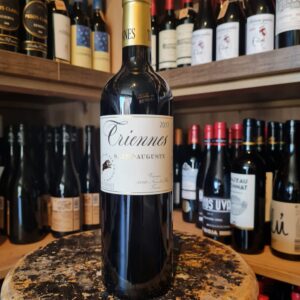 Saint Auguste is a selection of the best cuvées of Syrah, Cabernet-Sauvignon and Merlot. The robe is rich dark purple with bright ruby highlights. It offers alluring aromas of ripe black cherries, nutmeg and clove. It is full and concentrated and is a wine that can be enjoyed upon release and over the following ten to fifteen years.
Saint Auguste is a selection of the best cuvées of Syrah, Cabernet-Sauvignon and Merlot. The robe is rich dark purple with bright ruby highlights. It offers alluring aromas of ripe black cherries, nutmeg and clove. It is full and concentrated and is a wine that can be enjoyed upon release and over the following ten to fifteen years. -
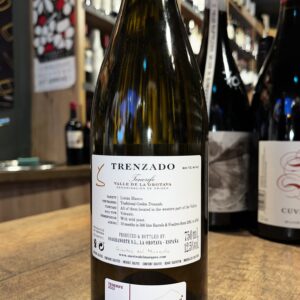
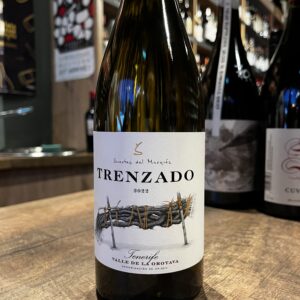 Trenzado takes its name from a local vine training method called Cordon Trenzado, in which the branches of the vine are almost braided together and supported on stakes (as pictured on the label). Tenerife has a long and fascinating winemaking history, indigenous varieties such as Listán Negro and Blanco, Tintilla and Baboso Negro. Many vineyards are made up of 100 year-old+ ungrafted vines. Jonatan Garcia runs the family winery that is located in the Orotava Valley on the north side of the island. Many are grown in a traditional trellising system called Cordon Trenzado - vine branches are braided together and supported on stakes, and eventually grow into gnarly arms sometimes several meters in length. The estate has some incredibly old, low-yielding vines and produce wines that have freshness, balance, purity of fruit, minerality and an authentic terroir character. A beautiful wine, perfect for the seasoned Chardonnay drinker, seeking to try something a different. Pair it with grilled fish dishes, shellfish and crustaceans; also well paired with stewed white meats
Trenzado takes its name from a local vine training method called Cordon Trenzado, in which the branches of the vine are almost braided together and supported on stakes (as pictured on the label). Tenerife has a long and fascinating winemaking history, indigenous varieties such as Listán Negro and Blanco, Tintilla and Baboso Negro. Many vineyards are made up of 100 year-old+ ungrafted vines. Jonatan Garcia runs the family winery that is located in the Orotava Valley on the north side of the island. Many are grown in a traditional trellising system called Cordon Trenzado - vine branches are braided together and supported on stakes, and eventually grow into gnarly arms sometimes several meters in length. The estate has some incredibly old, low-yielding vines and produce wines that have freshness, balance, purity of fruit, minerality and an authentic terroir character. A beautiful wine, perfect for the seasoned Chardonnay drinker, seeking to try something a different. Pair it with grilled fish dishes, shellfish and crustaceans; also well paired with stewed white meats


